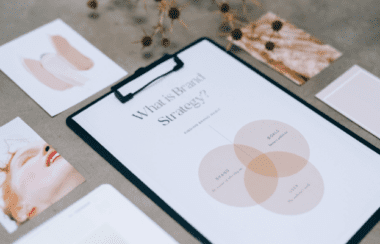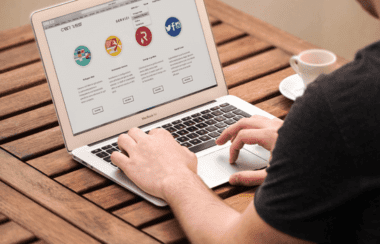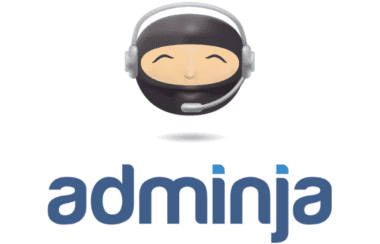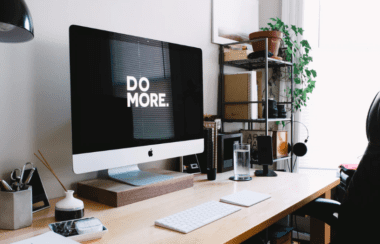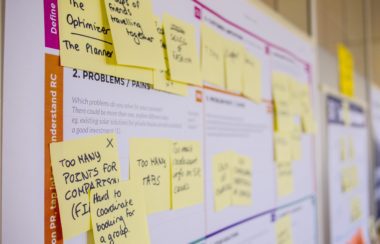How to Become a Full-Time Freelancer: 10 Tips to Help You Get Started
By Craig Cannings

Freelancing can be a great way to supplement an existing career or earn a full-time living. In fact, approximately 1.1 billion people work as freelancers in various positions globally. In today’s changing economy, many are considering transitioning from a traditional job to a freelance position, leaving them wondering how to become a full-time freelancer.
While the idea of making the transition from a full-time employee to a full-time freelancer may seem a bit daunting, with the proper planning, it’s possible.
Starting Fresh as a Full-Time Freelancer
When you first consider making the transition from a full-time job to a full-time freelancer, it can feel like a daunting challenge. You’re taking a risk by leaving a steady paycheck and benefits, and you’ll likely experience some growing pains as you learn how to manage your finances and market your services.
However, the reward of being your own boss, setting your own schedule, and working in the field you love is well worth the risk. When you’re ready to make the jump, don’t let fear keep you from starting fresh as a full-time freelancer.
Creating a new life for yourself as a full-time freelancer can be a rewarding experience. The lifestyle is often associated with freedom and flexibility, and there’s no better way to build a business that’s uniquely your own.
The process of making the transition from a job to a full-time freelancer can be intimidating and filled with uncertainty. Many wonder how to become a full-time freelancer, and while there isn’t one clear path, there are a few ways to learn how to build a full-time freelancing career.
How to Become a Full-Time Freelancer: 10 Steps to Help You Make the Transition
A lot of people dream of making a career in freelancing. If you’re one of those people looking to transition from a full-time job to a career in freelancing, then you’ll want to consider the following 10 steps to help you make the transition as seamless as possible:
1. Have a Plan
No matter how excited you may be to make this transition, you need to stop and take a breath. With a clear mind, it’s time to sit down and formulate a plan.
In fact, a great way to transition from a traditional job to a freelance, entrepreneurial mindset is by beginning your transition on a part-time basis. This allows you to explore your market and the freelance industry while still providing you with a steady income. Over time, you can increase your hours and begin to transition full-time.
It also allows you to take the time to audit your current skillsets and find your ideal freelance career path. This will help you determine what services you’ll provide and how to market yourself as a full-time freelancer.
2. Continuously Work on Skill Building
The best way to increase your marketability as a full-time freelancer is by acquiring new skills and enhancing your current skill sets. You may have an excellent idea for a full-time freelancing business. Still, if you don’t have the skills to execute, you may want to consider investing in some education and additional training.
Online courses are a great way to learn new skills at your own pace, and many online platforms offer the opportunity to build your freelance business while learning a new skill at the same time. This is a great way to build a solid foundation for your future as a full-time freelancer.
3. Research Reputable Freelance Resources/Programs
There are several reputable freelance programs, platforms, and resources available to help you make the transition from a traditional job to a full-time freelancer. It’s essential to do your research and identify which programs and agencies will provide the most benefit to your current situation.
The opportunity to network with other entrepreneurs, build a network of contacts, and have access to educational training and workshops, is well worth the time and investment.
4. Join a Community of Like-minded Individuals
It’s essential to surround yourself with other like-minded individuals as you begin your transition from a job to a full-time freelancer. Not only will this help you build a support system, but it’s also a great way to access unique opportunities and a range of resources that can help you on your journey.
Here at Freelance University, we encourage our students to “never freelance alone”!
5. Start Investing in Necessary Resources/Tools
This will look different for everyone and will be dependent on which industry and the niche you’re in, but it’s a good idea to start investing in the necessary resources and tools to help you build a successful full-time freelancing career.
These may include business cards, a website, a smartphone, and other necessary equipment or software to help you be as successful as possible.
It’s essential to take a realistic look at your current situation and determine what you’ll need to make the transition as seamless as possible. This will help you build a budget and begin to make the necessary investments.
6. Build Yourself a Website
Creating a website is necessary for almost every entrepreneur in today’s digital age. Not only is a website an integral part of your digital footprint and brand, but it’s also a great way to showcase your work, provide contact information, and build a platform from which to launch your full-time freelancing business.
7. Establish Your Workspace
A home office or freelance studio is another must-have for your full-time freelancing business. It’s essential to have a designated space where you can work in a quiet environment, free of distractions, and focus on building your business.
But remember, the beauty of a freelancing business is it provides flexibility to work from anywhere so your office may be at home, in a coffee shop, or your local library. It is always good to establish a home-base, but also enjoy the freedom and flexibility a laptop lifestyle can afford.
8. Start Working on Your Initial Projects
With the necessary tools and a place to call your workspace, it’s time to start working on your initial projects. This is the time to start determining the services you are going to offer, getting your name out there, and building a client base.
Building momentum is essential at this stage, and the more work you can generate, the better. The good news? There are dozens of reputable freelance directories and job forums to help you find work to get you started. Once you’ve got a few projects under your belt, you can start working out how to monetize your talents and turn your work into a full-time gig.
9. Start Networking and Advertising Your Services
Just like building a website, networking and advertising are essential tools for any entrepreneur. With so many new and innovative ways to market your services, the opportunities are endless. Not only will this help you generate more leads and opportunities, but it’s also a great way to build your brand and establish your credibility within your industry.
10. Always Ask for Feedback and Reviews
It’s impossible to build a successful business without receiving feedback and reviews. This is an essential step for two reasons:
First, it provides you with the necessary information to improve your business and helps you understand what’s working, what isn’t, and how to best develop your clients’ needs.
Second, it helps you build a reputation in your industry and provides your clientele with a platform to share their experiences and the results of your work. This is an invaluable tool for building credibility and providing potential clients with a sense of your work style and capabilities.
Move Forward as a Full-Time Freelancer with Confidence
Now that you’re armed with the tools and knowledge necessary to take the next step in your career, you can move forward with confidence. You’ve made the decision to invest in yourself and your future, and the only thing left to do is put in the hard work and follow your plan to success.
Remember, the only person who can hold you back is yourself, so don’t allow your fears to stand in the way of your success!
Ready to take the next steps in your journey as a freelancer? Then make sure to download our Freelancer Start-Up Guide today!













